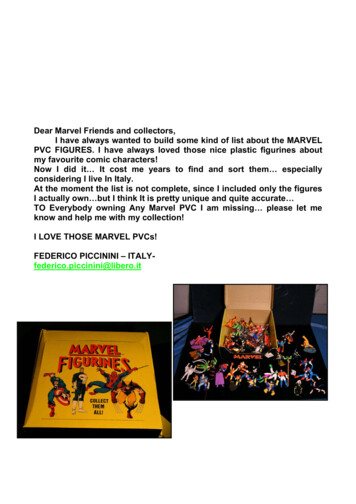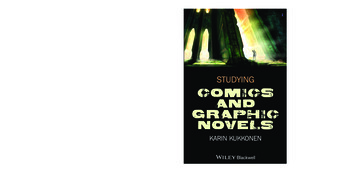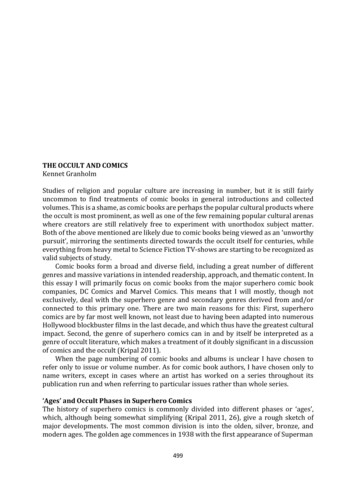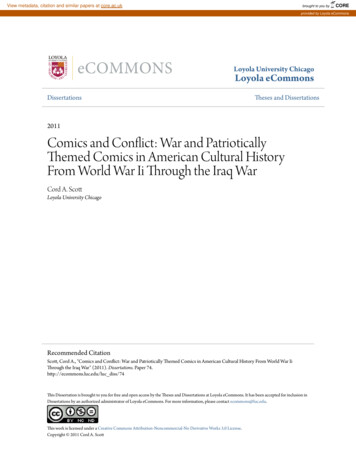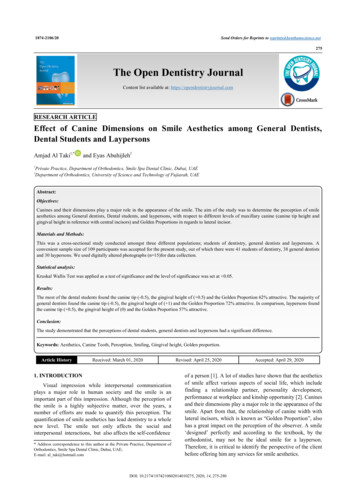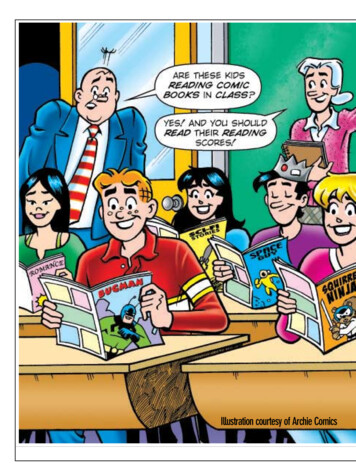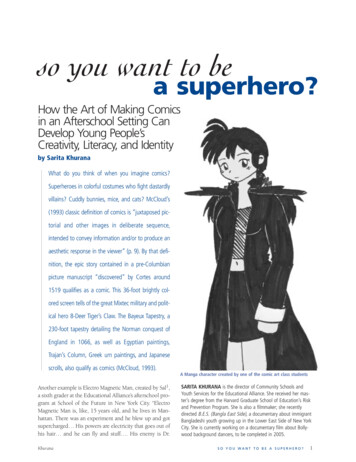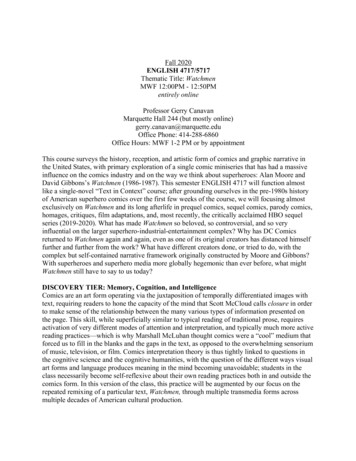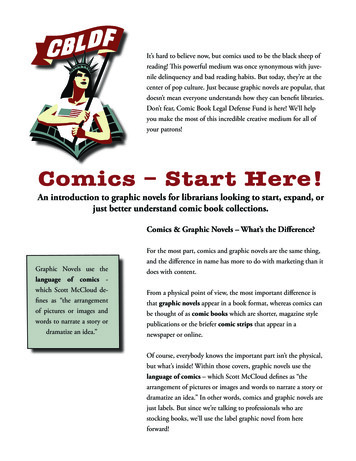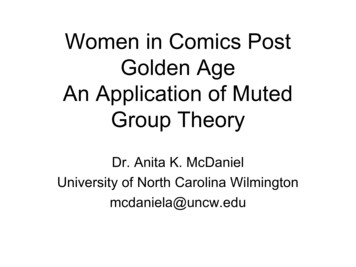
Transcription
Women in Comics PostGolden AgeAn Application of MutedGroup TheoryDr. Anita K. McDanielUniversity of North Carolina Wilmingtonmcdaniela@uncw.edu
Muted Group Theory in ComicsWomen in comics don'thave defined roles letalone “lead.” At best,they “help” and “lookpretty.”Why? Because thesuperhero genrecommunicates in thelanguage of men.
Muted Group Theory(Kramarae, 2005, p. 55)Muted groups must change their language whencommunicating in the public domain, thus cannot fullyshare their true thougths. Their speech is disrespectedby those in dominant groups; their knowledge is notconsidered sufficient for the public decision-making orpolicy making processes of that culture; theirexperiences are interpreted for them by others;And they are encouraged to see themselves asrepresented in the dominant culture.
How muted groups find their voice(Griffin, Ledbetter & Sparks, 2015, p. 465)Assimilation—blending in with the dominantgroupAccommodation—persuading the dominantgroup to incorporate the experiences ofthe muted groupSeparation—minimizing contact with thedominant group
Women in ComicsThesis Often it has been stated that female superhero titles donot sell. It is not surprising when superheroines (createdby men) become two dimensional stereotypes, plotdevices for the stories of male superheroes, and industryjokes. However, female editors, writers, and artists helpsuperheroines reclaim their dignity and “super” statuswhen they use accommodating communicationstrategies.
She-Hulk and Jan DuursemaGood comic art is creating avisual representation ofwho that character is andnot just generating acomposite of masculineor feminine features.Unfortunately, theindustry standard forgood comic book art hasbecome drawing men tolook strong and braveand drawing women withlarge breasts.Despite hersuperpoweredsimilarities to theHulk, She-Hulkbecame an industryjoke as a hero due toher trademark tearaway clothing andcompliance with herexploitation.
Marvel Swimsuit Issue She-HulkSteven Geiger/Paul Mounts versionCommodified femininityWhen media agents signifyfemininity by visuallyemphasizing the line and curveof the female body along witha code of poses, gestures,body cants and gazes. So littleof She-Hulk’s identity exists inthe drawing beyond the greenhair and skin, she could beanybody and, thus, becomesrecognized as no one.
Marvel Swimsuit Issue She-HulkJan Duursema/Tom Smith versionAccommodationDuursema is known for creatingstrong women–physicallystrong and strong in character.Readers are remindedconstantly that these womendo something besides lookpretty. Notice how almost halfof the space on the page isdevoted to the character’slegs. This visual techniquecreates a balance betweenShe-Hulk’s feminine qualitiesand her superhero qualities.
Women in ComicsConclusionI feel that the post Golden Age superhero genre hasbenefitted from the contributions of women in comicbook production.Hopefully, the feminine voice in the comic industry hashelped readers of the superhero genre appreciate thevalue of the female superhero.
Further Readings . Grand Comic Book Database [Online July 2006]. http://comics.org/index.lasso . . Who’s Who in American Comic Books [Online July 2006]. /WhosWho.aspx . Duursema, J., Duursema, J. & Smith, T. (1995). “She-Hulk.” MARVELSWIMSUIT SPECIAL 1, 4. Lee, S., Kraft, D. A., Buscema, J. & Vosburg, M. (2006). Savage SheHulk #1-25. New York: Marvel Publishing, Inc. Kramare, C. (2005). Muted group theory and communication: Askingdangerous questions. Women and Language, 28(2), 55-61.
Women in Comics Conclusion I feel that the post Golden Age superhero genre has benefitted from the contributions of women in comic book production. Hopefully, the feminine voice in the comic indust
